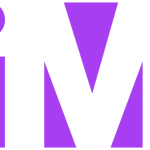While many math educators may be able to order fractions from largest to smallest in their sleep, teaching that skill to students and recognizing effective teaching strategies in instructional materials is more complicated. An adult might have an efficient and effective method of determining the largest fraction within a group–a method that works every time they do it themselves–but this knowledge alone is not enough to help students learn the skill of ordering fractions.
In addition to being able to do the skill, a teacher needs to be able to quickly determine if alternative methods will always give the correct answer. Teachers also need to be able to accommodate students who might order fractions using different methods that are also correct and equally as efficient, while at the same time offering support to learners in the conceptual building stages of ordering fractions when efficiency is not the only consideration. This conceptual building may involve specific representations of fractions for specific purposes. Some students might think about a fraction as a shape; others might think about a fraction as a point on a number line. Teachers should understand when each representation is preferable, and understand that thinking of fractions on a number line boosts students’ connection between fractions and other types of numbers.
In addition, teachers should support the use of different representations and, when appropriate, steer students toward using a certain representation in order to make connections that will be helpful in future study of mathematics. This additional knowledge that is necessary to teach mathematics–beyond what is needed to do mathematics–has been dubbed by Deborah Ball, mathematics education researcher at University of Michigan, as “Mathematical Knowledge for Teaching” or MKT.
In our project working with teachers to adapt their instructional materials for fractions, the group built our MKT collaboratively by examining tasks from both a student and teacher perspective. One aspect of MKT that we worked on throughout the project is the ability to choose a task that helps students learn a particular strategy for solving. Consider the three sets of fractions below:
Set A: 1/4, 1/20, 1/19, 1/2, 1/10
Set B: 4/13, 3/11, 6/20, 1/3, 2/5
Set C: 5/6, 3/8, 2/3, 3/7, 1/12
Which of these sets of fractions would be best for helping students learn to develop several different strategies for comparing fractions?
While each of the sets gives students an opportunity to compare fractions, there are specific strategies that students might use for each. By thinking together as a group about different fraction comparison strategies such as using common numerators, using common denominators, and using benchmark fractions, we were able to determine what an ideal set of numbers for comparing fractions might look like, based on the techniques that the teacher wanted to encourage in their students.
For example, Set A above can be compared using only the strategy of common numerators, since these fractions are all unit fractions. Set B uses fractions that are all less than ½, missing a prime opportunity for benchmarking as a comparative strategy. Also, Set B does not give an opportunity to use common numerators or common denominators as a strategy without finding equivalent fractions. Set C gives an opportunity to compare with common numerators (⅜ and 3/7) as well as an opportunity to use ½ as a benchmark since some fractions are greater and some are less than ½ .
By collaboratively ordering fractions, looking at student work and student strategies to order fractions, and considering various different tasks that ask students to order fractions, our group was able to increase our collective MKT on this topic. Before our work together, when asked which of the three sets of fractions would best help students learn to develop several different strategies for comparing fractions, 30% of teachers in the project answered the question correctly by choosing Set C. When asked at the end of our work together, 73% of teachers correctly chose Set C. This increase shows how providing teachers with training to boost their MKT can help them learn to identify higher quality tasks and design lessons that support students in developing a deeper understanding of mathematical skills and concepts.


















